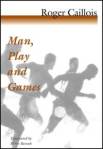So an update after being dark for over two months: This semester I am taking a class in videogames and I’d like to post some responses I do for class on the theory of games. This does not mean I will be switching to talking about videogames now. This first one is in response to theory author by the name of Roger Caillois called “Man, Play, and Games” give it a look:
The aspects of games in Roger Caillois’ Man, Play, and Games are elements like competitiveness, chance, vertigo, and simulation to describe how they engage the player. In order, the element of competitiveness (or agon) involves rivalry, chance (alea) uses luck, vertigo (ilinx) describes momentous excitement, and simulation (mimicry) represents acting or taking on a role. The text was particularly interesting in how these elements interact in six ways, but I have focused on the four most interesting to me. In the intersection of competitiveness and luck, Caillois describes how the Ancient Romans understood that “quantification and the spirit of precision” allow “free reign to agon and alea in the rules of games”. Romans both accepted the fatalist inevitability of luck and the desire to maximize their chance of winning as aspects of games. Likewise, there was understanding that competitiveness and simulation or vertigo was also present to spectators in the form of “identification”, or feeling the excitement of two rivals clash and identifying with their styles of play. The intersection that seemed the most mysterious and fascinating to me was simulation and vertigo, involving role playing, or “masks and uniforms” which players use to simulate a role within their “magic circle”, where an audience and their fellow players take pleasure from pretending they are a character.
As a player of the card game Magic: The Gathering, I found that these four elements are prevalent in several stereotypical player behaviors. There are four behaviors that Magic lead designer Mark Rosewater and the Magic R&D team have identified. These include the pro-player who, “ just want to win” called “Spike” who represent agon to the creative simulative players who “want to win in the most creative, fun, and convoluted way” called “Johnny” as well as the similar profile of the player who “wants the thrill of playing strong and fun cards” known as “Timmy”. I wish that Caillois would have discussed how these elements found in Man, Play, and Games as they related to the preferences of different players as well as the games they are found in and the periods of history when they were popular.


